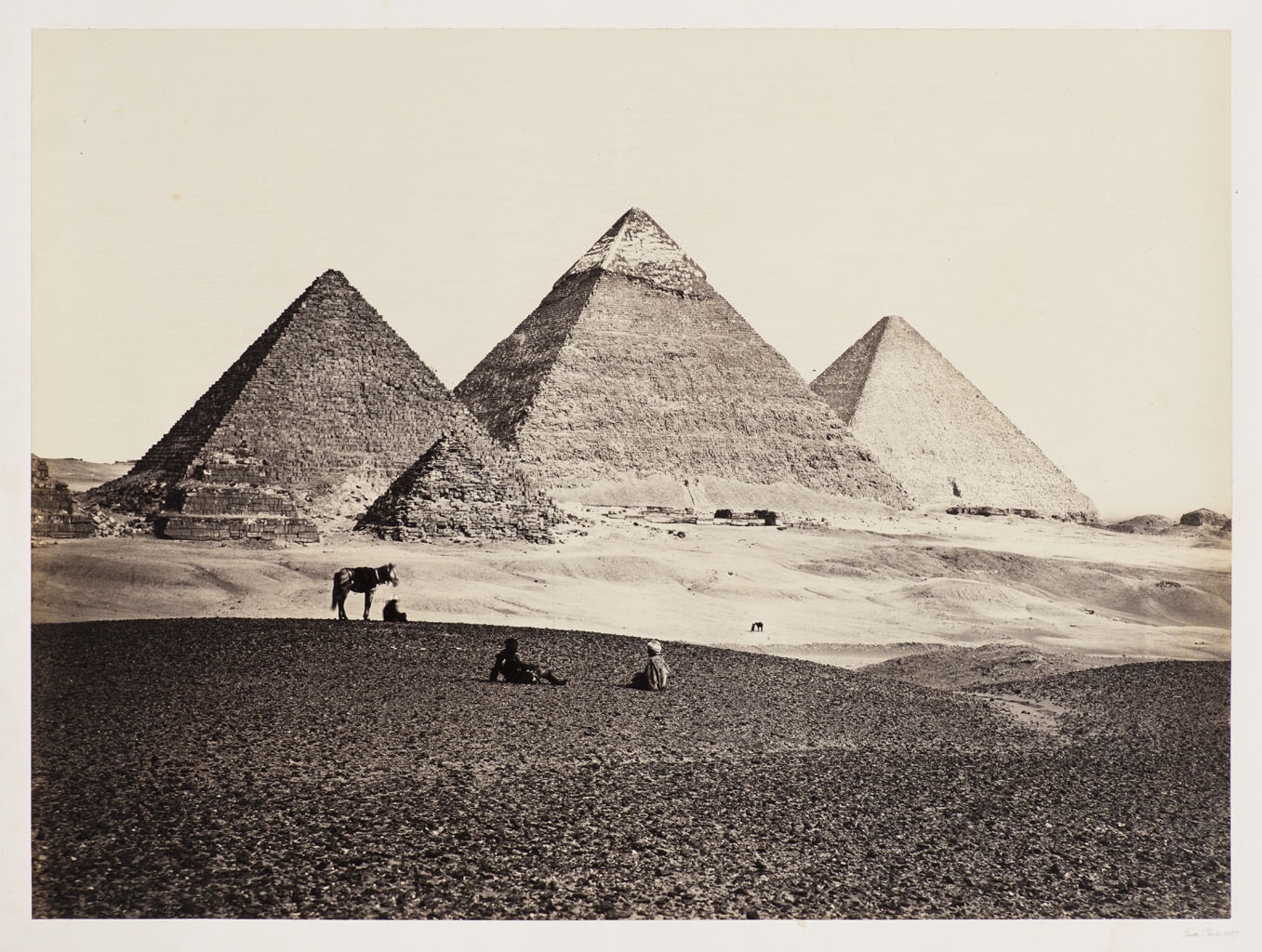
November 12, 2016–February 5, 2017
About the Exhibition
Frances Frith (English, 1822–1898), The Pyramids of El-Geezah, c. 1860. Clark Art Institute, 1998.42.3.12
When photographs were first widely produced and distributed during the second half of the nineteenth century, they offered viewers new ways to discover unknown people, places, and things. This exhibition explores how photographers considered these subjects during the medium’s first seventy-five years. During this exciting period, images were captured for many different reasons—from documentation to curiosity—and they came in many forms, including deluxe book illustrations, portable portrait cards, and frame-worthy landscapes.
Given the increased desire for images of all types during this era of discovery, photographic processes and techniques changed frequently and rapidly to meet demands. In the mid-nineteenth century, exposure times could be more than a minute long, and the need for immobility often dictated subject matter. Technology rapidly progressed, however, and by 1900 an image could be instantly fastened to a negative at the click of a button. The images in the exhibition allow us to look back over 100 years and discover a time when the world was far less interconnected than in today’s fast-paced environment.
Photography and Discovery is the first extensive presentation to feature the Clark’s collection of nineteenth- and early twentieth-century photography. Built over the past eighteen years, the collection of primarily European, American, and British photographs now numbers more than 1,000 objects and echoes the strengths of the institute’s holdings in painting, sculpture, decorative arts, prints, and drawings. Included as well are works on loan from the Troob Family Foundation and selections from the Clark’s David A. Hanson Collection of the History of Photomechanical Reproduction.
This exhibition is supported by a grant from the Robert Mapplethorpe Foundation.


-jpg.jpg)